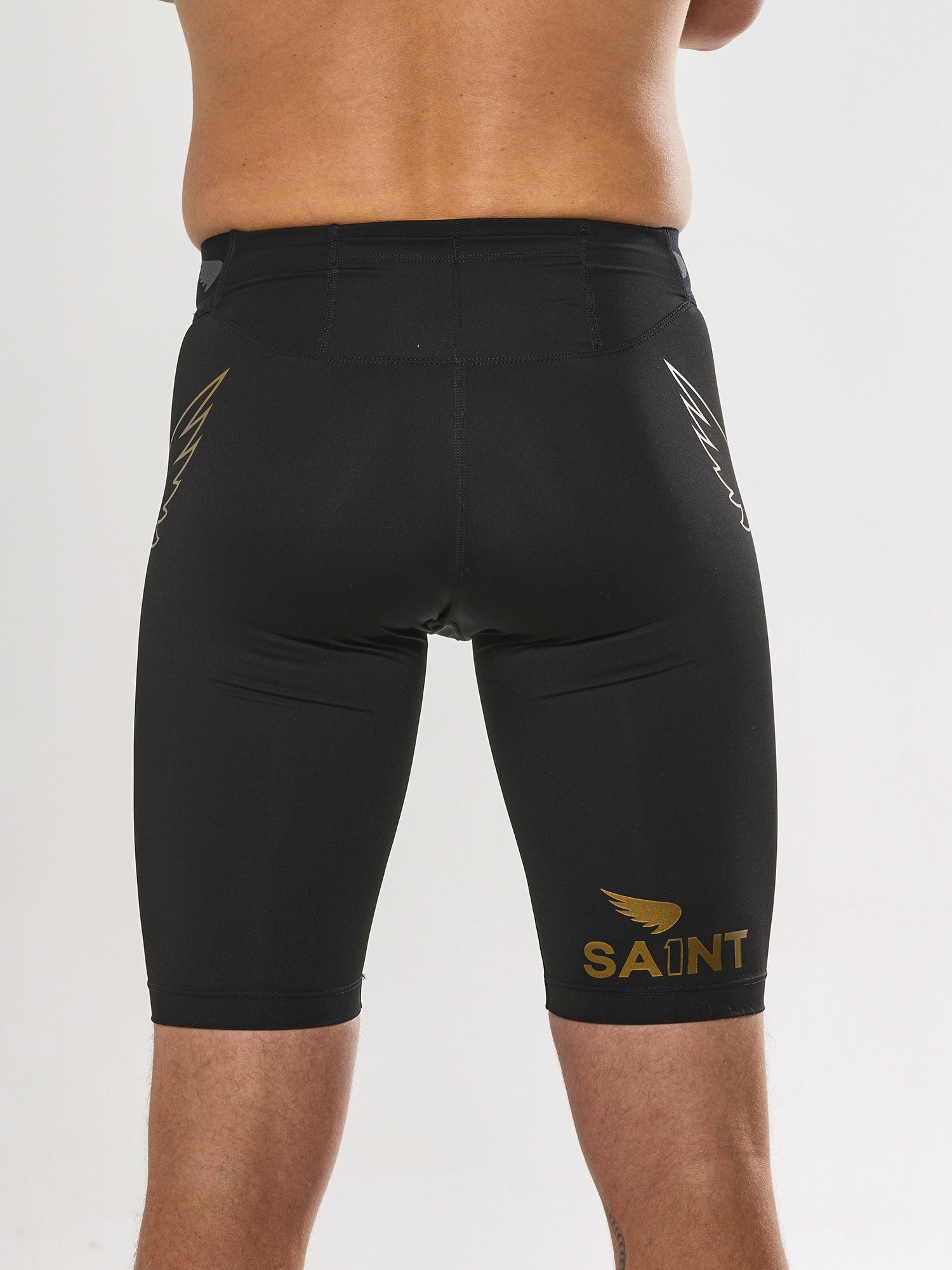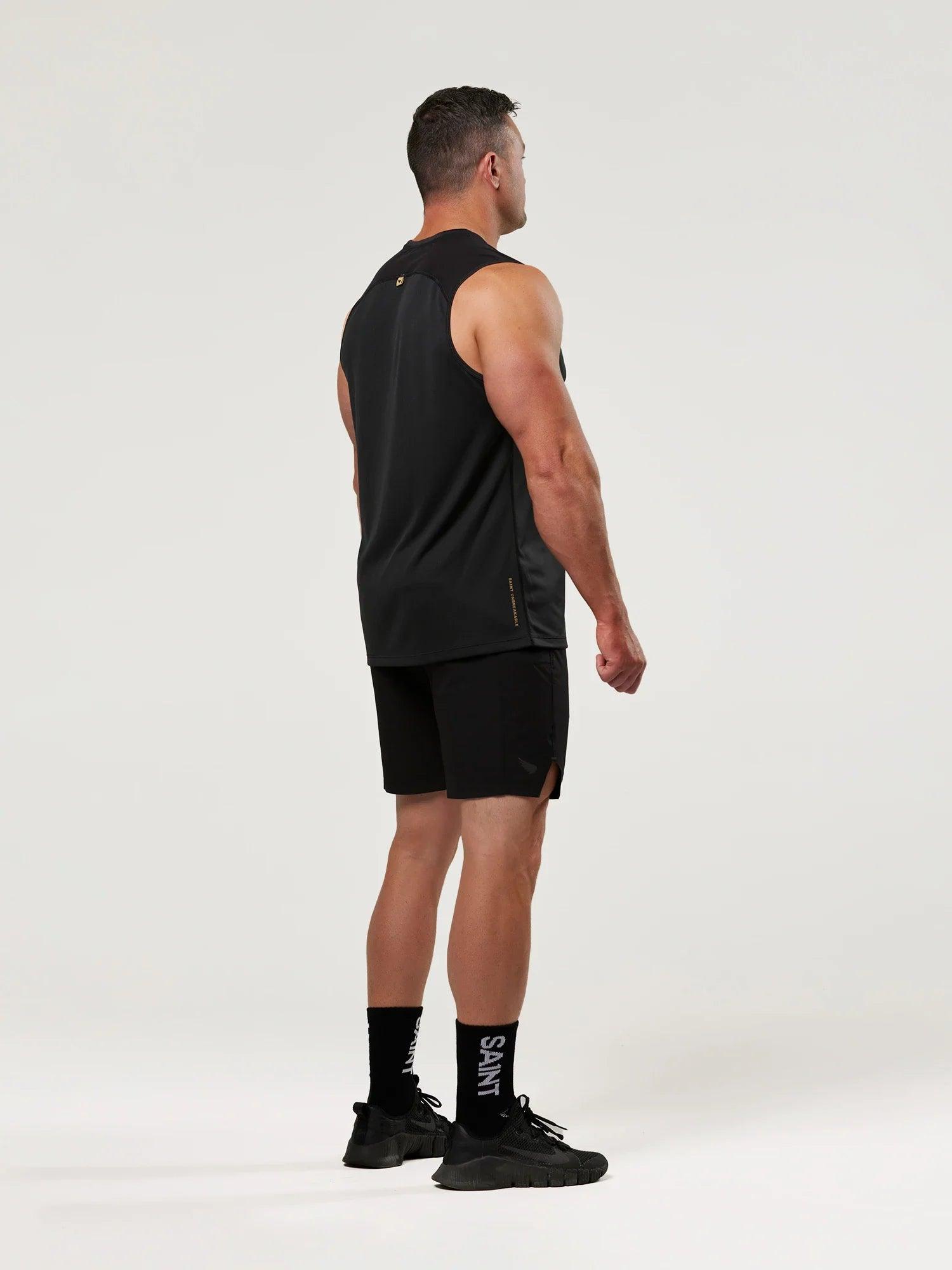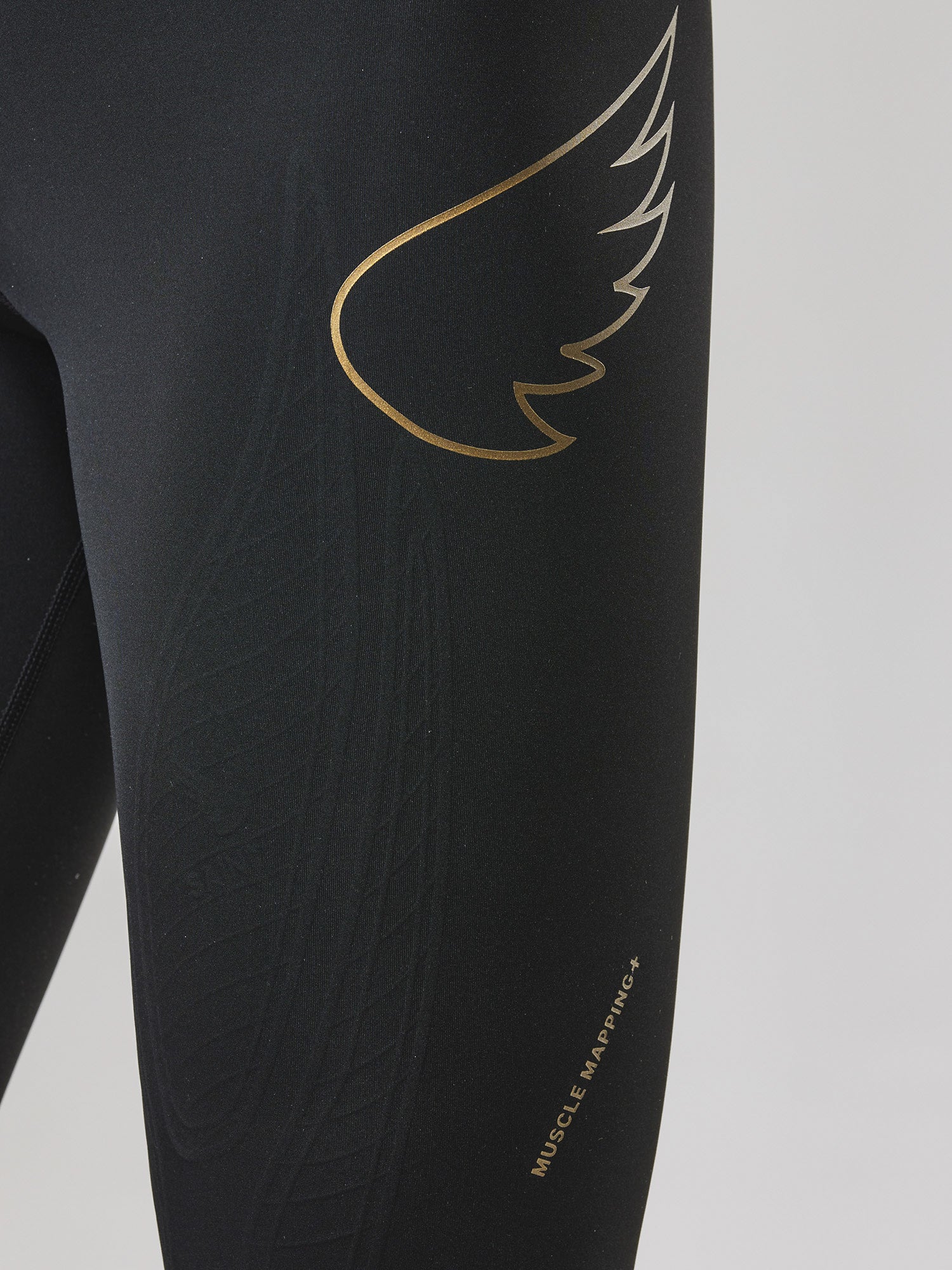The fitness industry is always on the move. The way we exercise has changed dramatically over the last few decades, and due to the effects of COVID we've probably seen the most rapid change in how individuals get their exercise to date.
So what exactly does the future of fitness industry trends look like? In this article, we'll go over the most exciting developments in the fitness world for 2024, so you can start your new year on the right track.
Fitness Trends for 2024
Biohacking Goes Mainstream
Biohacking is a term the fitness world has adopted for the way we 'hack' our internal systems to improve ourselves for the better. Don't worry, it's not as complicated as it sounds. Biohacking can be as simple as eating better, improving your diet, sleep, and hydration.
Biohacking can also be achieved through technology like fitness wearables, implanted sensors, and other training feedback tools. At the end of the day, the concept is to take control of your body by tweaking it in many small but subtle ways.
Online Workouts & Hybrid Memberships
Online fitness was one of the biggest trends to come out of COVID. While it started as a necessity, people got used to skipping the drive to the gym, and there's been an increasing demand for online training ever since.
Some people prefer to mix things up by combining online classes with actual visits to the gym, so they opt for a hybrid membership. Some gyms offer a mix of in-person training and online sessions to give customers flexibility in their exercise. These can sometimes cost as much as half the price of a regular gym membership!
Gaming and Fitness Fusion
Industry leaders have combined gaming and fitness to create some truly exciting innovations. If exercise often feels like a chore, you can smash out your next cardio workout while gaming at the same time.
The Aviron rowing machine is one of the prime examples of how far this trend has come. Aviron have made a dozen different games to play while getting a sweat on, including titles like 'Disaster Down Under' and 'Zombie Apocalypse'.
Aviron have changed the game when it comes to technology and fitness, turning heads from customers and competitors alike.
Social Fitness Dynamics
With more people working from home, gyms have become something of a social hub for people who spend most of their days at home. It can be a place where former workmates get together, get in their workout, then spend a few moments catching up.
Some gyms are slowly moving away from the meathead persona and providing a more relaxed, social environment. We may even see things like relaxation areas and smoothie bars introduced in the foreseeable future.
Wellness Coaching on the Rise
Wellness coaching has seen a huge boost in the last few years, with the trend set to go well beyond 2024. In fact, some insurance companies have already started paying for wellness coaches because they were getting so many claims!
Wellness coaching still involves many of the same roles as personal training, but provides a more wholistic and complete approach to health. A wellness coach can provide advice on things like diet, sleep, your connections with others, and even your outlook on life. Coaches usually meet their clients twice a week for 30-40 minute sessions.
Emerging Workout Preferences
Mini Workouts
It seems like we're all a bit busier these days, which is why some people are attracted to the idea of shorter workouts. Many people are opting to cut up their workouts into smaller sessions throughout the day. Instead of an hour-long workout, it might be more convenient to have three 15 minute sessions throughout the day.
Most people attracted to mini workouts are thinking of time management, but it can also be about allowing your body to recover. Instead of working one body part then immediately moving on to the next while still fatigued, some people find it more beneficial to allow a few hours of recovery instead.
Mindfulness in Exercise
Mindfulness has seen a steady increase in the last few years, with more people focusing on their mental health along with their physical health than ever before. Meditation exercises are an effective way to relieve the daily stresses of our lives, and they can be as short as five minute sessions.
Yoga, meditation and Pilates are all examples of fitness industry trends that cater to both mental and physical health. Whether it's at home or with a class, try experimenting with mindfulness if your fitness program is lacking in relaxation. All you really need is a yoga mat, and even that can be worked around.
Reverse Running Benefits
Reverse running is a surprising trend that's picked up a lot of steam. It's exactly what the name suggests - running backwards. The movement has come from research that suggests running backwards can help with injury recovery, as it places more emphasis on the hamstrings and less impact on your joints.
Mixing up your routine between regular and reverse running can give an equal emphasis on both the posterior and anterior kinetic chains. It can also help improve your posture. Some experts even claim that reverse running can provide 8 times the benefit of normal running!
Keep an ear open for reverse running in the fitness world. It's an exercise trend that might just explode in the next few years.
Outdoor Fitness Revival

After spending so much time inside during lockdowns, it's no surprise that people are keen to get as much sun as possible during their workouts. Some people have come to see the benefits of getting some vitamin D while training and have come to dislike the prospect of exercising under a roof.
Outdoor exercises like hiking, jogging and cycling have increased dramatically in the last few years, with 59% of active adults choosing to take at least part of their training outdoors. This can be a hit of tennis, walking the dog for longer sessions or even Bootcamp-style classes.
Exercising in a natural environment can be a refreshing feeling, especially if you have a desk job. Try mixing up your routine by having at least one session of outdoor exercise a week.
Fitness Wearables
Fitness wearables is the term for devices that you wear throughout the day to track your health and fitness. You might have heard them referred to as fitness trackers or smartwatches.
First introduced in 2009, fitness wearables have come a long way as the technology has made them more practical and convenient. The latest models can track things like your sleeping habits, blood oxygen levels, and stress hormone response.
You've probably seen a ton of people wearing some form of fitness wearable, and it's no wonder. Wearables are one of the top fitness trends and are predicted to only grow further.
Industry-Specific Trends
Gym Hygiene Best Practices
Now that we're all back from covid, hygiene standards have become a priority for gym-goers and gym-owners alike. Fitness clubs have to be more conscious than ever of the space they're providing for their client base.
Paper towels and spray bottles should be easily accessible in any gym, along with sanitisation stations that dispense disinfectant. A gym should have regular cleaning schedules, and aim to have each area cleaned down at least twice a day
The Rowing Revolution
The rowing machine has always been a part of the gym experience, but rowing definitely hit a whole new level during lockdown. People bought rowing machines in droves, probably because they simultaneously work both the lower and upper body while still burning a lot of calories.
Fitness enthusiasts have come to see the benefits of the rowing machine as an all-in-one exercise machine, and sales are expected to keep rising in the coming years. Fitness programs designed around rowing machines may well become a staple of health clubs in the coming years.
Strength Training Renaissance
While the latest fitness trends all seem to involve a fancy way of getting a sweat, it's tough to beat a classic. More gym goers of all walks are seeing the benefits of strength training, from increasing bone strength, building metabolism, and developing a stronger immune system.
Functional fitness training has also seen a boost, which are workouts that focus on building strength that readies the body for daily activities.
Strength training can involve free weights, bodyweight exercises, or the use of exercise machines. You don't have to be the next Arnold Schwarzenegger to pick up a dumbbell. Personal trainers will be happy to work out a routine that suits your goals, however big or small they might be.
Rising Demand in High Intensity Interval Training
High Intensity Interval Training, or HIIT, is a trend that's steadily developed over the last few years. HIIT workouts involve short bursts of exercises like kettlebell swings, squats or renegade rows for 20-30 seconds, followed by very short rest periods and repeated for multiple rounds.
These fitness classes are popular for being engaging, time-efficient and covering several fitness areas at once. HIIT workouts are just one of the ways that fitness professionals are cultivating an inclusive fitness industry, by making workouts fun and approachable for anyone.
HIIT classes are great for building cardiovascular health and burning calories at the same time. If you struggle to stay focused and motivated in the gym, a HIIT class might be just what you need.
Fitness Recovery Essentials
As ongoing research reveals more about the benefits of proper recovery, the public appetite for optimal fitness recovery has increased as well. Active recovery seems to become a bigger trend every year, with tools like foam rollers and massage guns seeing increased use both at home and in gyms.
A personal trainer or fitness professional might consider providing their clients with these tools, and give their clients guidance on the most optimal forms of active recovery.
You might consider incorporating active recovery into your own workout routines for better overall well-being. It doesn't have to be anything major. Just a few minutes with the foam roller or massage gun can make a world of difference when it comes to the day after a big gym session.
Innovative Group Classes
Fitness classes have been around for a while now, but we're seeing more variety than ever before with emerging trends and crazes. Activities like the trapeze, trampolining and rollerblading have all emerged as ways to engage in physical activity while having a bit of fun at the same time.
Viral videos from platforms like TikTok have also given people an appetite for fun and engaging group classes. Videos like weighted hula hoops and reverse running have people eager to try out the latest fitness craze.
Conclusion
As we move into 2024 and beyond, the fitness world is moving forward at breakneck speed. Trends involving new technology, viral ideas, and wholistic health approaches have come to dominate the fitness world, with plenty still to come in the future.
In order to stay motivated and engaged with your fitness, it's important to stay adaptable to evolving techniques of working out. Some ideas might seem over the top or strange at first, but you never know when the next great fitness trend will come along.
As always, keep up with SA1NT for the latest fitness advice and quality fitness apparel.
Frequently Asked Questions
What is the new fitness craze?
There's always a new fitness craze emerging, and sometimes it's hard to keep up with them all. As of 2024, here are some of the newest workout ideas:
Mini workouts: These are quick, 10-15 minute workouts that can be performed multiple times a day as opposed to the hour-long workout you might be used to. Mini workouts can be attractive to people looking to save time, or if you prefer to rest between working different body parts.
HIIT training: HIIT (High Intensity Interval Training) workouts are short, intense bursts of anaerobic exercise that can be completed in just 20 minutes. They're fun, engaging but also pretty tough. Expect to get a sweat on quickly in a HIIT class
Functional fitness training: Functional fitness workouts are strength training that gets your body ready for day-to-day activities. This involves movements like pulling, twisting, bending, pushing, squatting, and hauling.
Functional training has become popular because of its practical applications. It has a clear connection to daily life, which can help provide that extra motivation to stick to workouts.
What is the next big thing in fitness?
There's always something that claims to be the next big thing in fitness, and honestly, who the hell knows what that will be? However, there are a few contenders for the next big innovation in the fitness world.
Virtual/augmented reality workouts: Yes, you read that correctly. VR has already been gaining popularity in the fitness industry, and it's only going to develop further from here. VR and AR technologies promise to produce immersive and engaging workouts, making your daily workout all the more enjoyable.
Home workouts: COVID-19 saw a global shift towards home workouts, and even though we're all back at the gyms, it looks like the trend might be here to stay.
Now that people have seen the time-saving benefits of a convenient workout in their very own homes, the fitness industry has shifted towards accommodating for this change. Home gym equipment and fitness apps have skyrocketed in use since 2020, and will probably continue to be used in the years to come.
Personalised fitness: One size doesn't fit all, and the fitness industry is slowly starting to realise this concept. There's been a steady rise of individualised workout plans, nutritional advice and fitness tracking.
Advances in technology like smart watches and fitness trackers have made this more achievable than ever, and you don't have to necessarily invest in a personal trainer anymore.
What is the trend in the fitness industry?
There are many current trends in the fitness industry. The last few years in particular has seen the rise of a number of different modes of exercise.
Digital fitness: The integration of technology into fitness is only becoming stronger. Digital platforms, streaming services and fitness apps allow users to access their workouts anytime at their own convenience.
This trend was accelerated even further by COVID-19, but it was likely heading in this direction regardless.
Hybrid fitness plans: Home workouts have become more appealing in the last few years, but people still like going to the gym now and then. Hybrid fitness plans offer the best of both worlds.
Some gyms even offer hybrid plans where clients can choose between attending in-person classes or attending remotely.
Wellness integration: Fitness has usually been about strengthening your body, but programs are trending towards incorporating an aspect of mental health development as well. The holistic approach to health is becoming more popular as time goes on.
Wellness means integrating aspects of mental health, stress management, and overall wellbeing into a fitness program. Some examples include yoga, meditation and mindfulness.
Sustainability in fitness: As with most industries, the fitness world has seen a shift towards sustainability in its practises. It's become more common to see sustainably sourced and eco-friendly fitness apparel from the biggest brands, and this practise will certainly grow in the years to come.
Read about SA1NT's commitment to sustainability and eco-friendly practises here.
How can I stay ahead with the new fitness movements?
Staying ahead with new fitness movements is an active process that means staying informed, open to new ideas and willing to adapt your own fitness routine.
One of the best ways to stay on top of trends is to follow fitness influencers and experts whose advice you value. They can share insights into new workouts, training techniques and the latest fitness trends.
Follow fitness magazines and blogs for the latest advice ranging from nutrition to workout ideas. Once you've narrowed down a reputable source of information, keep up to date regularly to see what advice they can offer. SA1NT has a weekly blog dedicated to fitness advice and ideas.
Explore fitness apps to discover a variety of workouts that would otherwise go under your radar. Many fitness apps offer surprisingly good advice, using technology and data for a tailored fitness experience.
If you live and breathe fitness, try attending fitness expos and conferences. These gathering often showcase the latest equipment, technologies and workout programs. They also offer workshops where you can pick up tips from industry professionals.
Are there innovations in technology influencing fitness trends?
There are several innovations in technology that are influencing fitness trends today. The most obvious of these is wearable fitness technology like smart watches and heart rate monitors. These devices keep track of your progress and help individuals to make informed decisions regarding their health.
Fitness apps have also seen a dramatic rise in the last few years, especially since COVID. Apps are a simple way to access home workouts, nutritional advice and training routines, and their accessibility has been proven to be appealing to mass markets.
Smart home gym equipment like connected treadmills, stationary bikes, and strength training devices have also become popular household items. These devices often come with interactive features, live classes, and performance tracking capabilities.












































